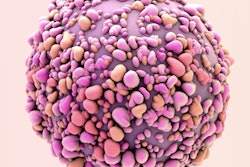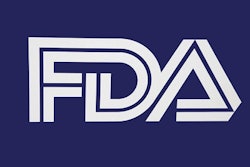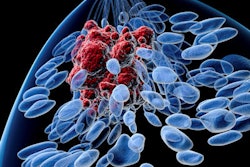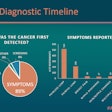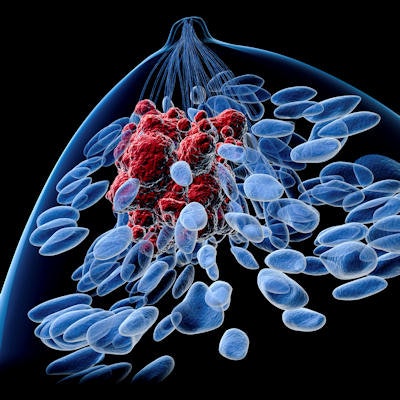
Screening mammography benefits men at high risk of breast cancer, according to a study published online September 17 in Radiology. The findings support the establishment of screening guidelines for men at high-risk of the disease, the researchers noted.
"Our study shows that although [mammography] screening takes place to a limited extent [in high-risk men] ... it has the potential to depict clinically occult early-stage malignancy in this population, with a cancer detection profile highly comparable and superior to screening outcomes seen in women with average risk," wrote the study authors, led by Dr. Yiming Gao of New York University Langone Medical Center.
Breast cancer in men is rare, and there are no established breast cancer screening guidelines for men at high risk of the disease -- due to personal history, genetic mutations, or family members with breast cancer -- so those diagnosed with it tend to have worse outcomes, Gao and colleagues noted. In fact, male breast cancer is often diagnosed after it has presented clinically, according to the group.
"Mammographic screening has helped improve the prognosis for women with breast cancer," Gao said in a statement released by the RSNA. "But men don't have any formalized screening guidelines, so they are more likely to be diagnosed at a more advanced stage and often don't do as well as women."
For their study, Gao and colleagues assessed breast imaging utilization patterns and screening outcomes in 1,869 men who underwent 2,052 mammography exams at Langone Medical Center over a period of 12 years. Mammography detected 2,304 breast lesions; of these, 149 were biopsied. Of the biopsied lesions, 41 (27.5%) were malignant, for a cancer detection rate of 18 per 1,000 exams in men at high-risk of breast cancer -- much higher than the average cancer detection rate of 3 to 5 per 1,000 exams in average risk women, according to the researchers. The cancers found were early stage, which improved the men's prognoses, the authors wrote.
Mammography's sensitivity was 100% and its specificity 95% -- due to the lack of fibroglandular tissue that can mask abnormal results in women, they wrote. A personal history of breast cancer was the most significant risk factor for breast cancer in the study, although Ashkenazi Jewish ancestry, genetic mutations, and a first-degree family history of breast cancer also were significant factors.
"These results show that it is possible to detect male breast cancer early, and it appears that mammography is effective in targeted screening of high-risk men," Gao said. "We've shown that male breast cancer doesn't have to be diagnosed only when symptomatic."
The study findings demonstrate that a new strategy for male breast cancer diagnosis is needed, according to Gao.
"We hope these results will provide a foundation for further investigations and potentially help pave the way to standardizing screening for certain high-risk groups of men," she said.




